Monuments breed contention, over who is honored—Confederate generals, say, or slaveholding founding fathers—and how they are designed. The Vietnam Memorial (1982), which changed forever what a military monument could look like, was so controversial it almost didn’t get built. But then came the Eisenhower Memorial, devoted to the undisputed hero of World War II, with a design by America’s most renowned architect. What could possibly go wrong?
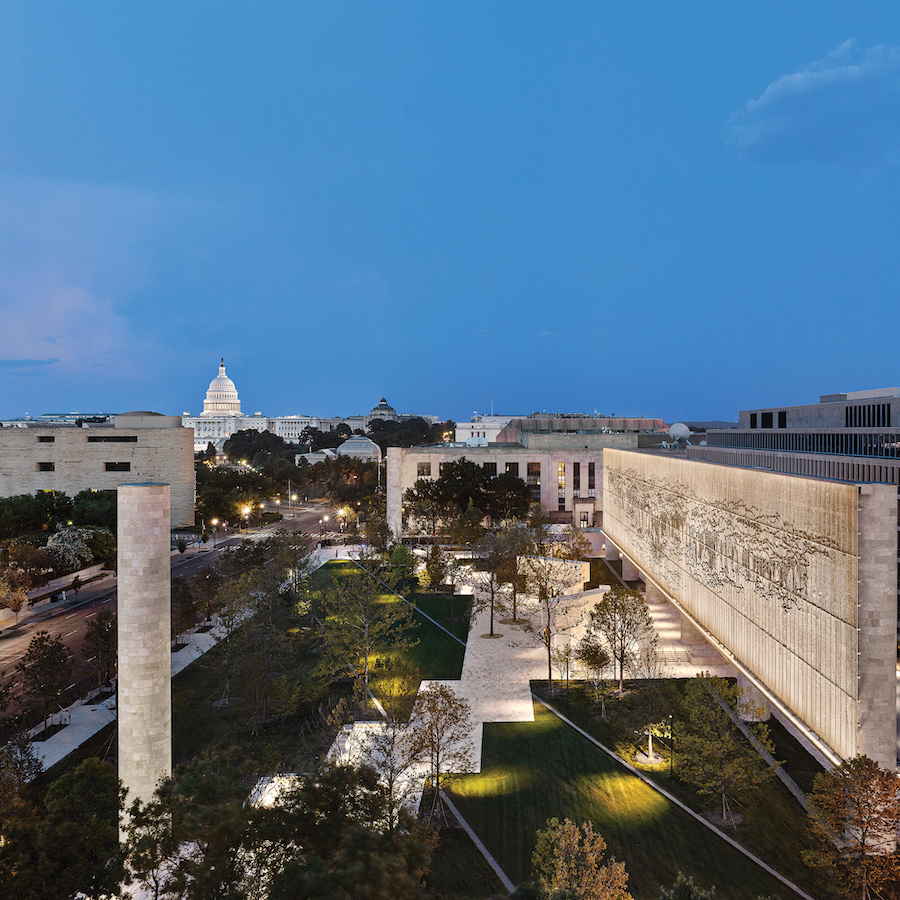
Quite a lot, it turns out. The $150 million memorial—designed by Frank Gehry, who was selected in a 2009 competition—is finally opening, but it took more than twice as long to complete as it took to win the war. On an unpromising four-acre site, south of the National Mall in Washington—jammed with parked cars and facing the back side of the National Air and Space Museum—Gehry proposed an immense, translucent metal tapestry, to mask the stolid 1961 U.S. Department of Education building behind it. On a plaza in front would be components celebrating Ike as both the supreme commander of the Allies and as the 34th President of the United States. But the design—and Gehry himself—came under fierce attack from several quarters, including the Eisenhower grandchildren, and from a little-known, conservative critic named Justin Shubow (Shubow went on to find favor in the current White House and reportedly was behind a proposed executive order to mandate a “classical style” for new Federal buildings). At one point, Congress was so swayed by the naysayers that the House canceled the memorial’s appropriation.
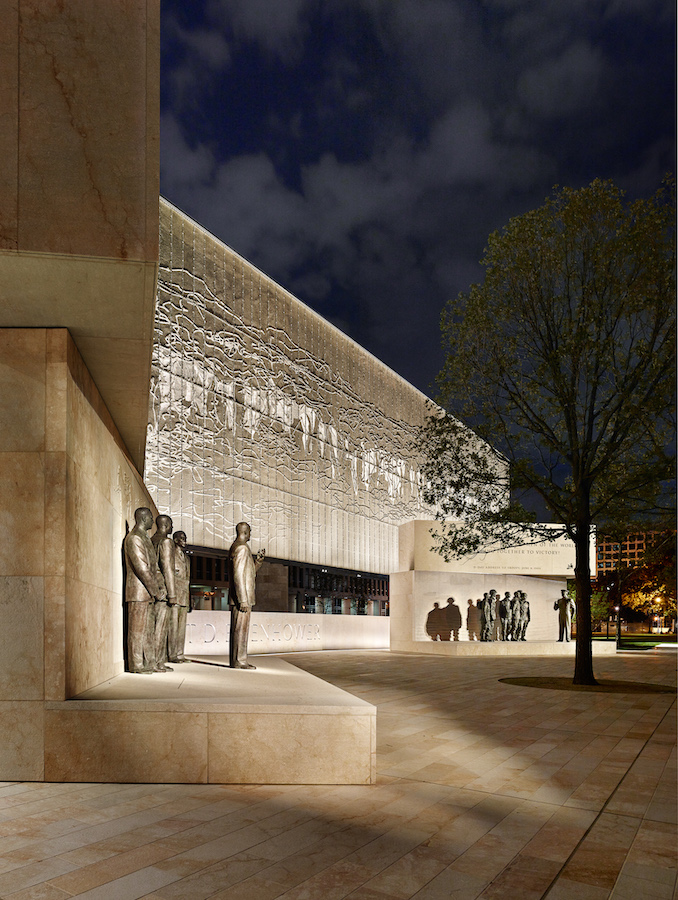
But detractors mistook Gehry, 91, for an inflexible divo, and they underestimated his stamina. As anyone who has visited his office knows, he continuously reworks projects, injecting new ideas, with dozens of iterations, before coming to a final design. Initially reluctant to enter the competition, the architect “became a believer,” he says, and was even attracted to the “impossible” site: “That was a mountain I wanted to climb.” But, most of all, as he read about Eisenhower, his admiration grew, not only for Ike’s achievements but for his modesty and plain, Midwestern background. When Eisenhower returned victorious in 1945 to his hometown of Abilene, Kansas, he gave a speech—an excerpt of which is now engraved on one wall of the memorial: “Because no man is really a man who has lost out of himself all of the boy, I want to speak first of the dreams of a barefoot boy.”
That dreaming, barefoot boy was a powerful metaphor for Gehry, who came to California as a teenage immigrant from Canada, and who also served, in the 1950s, in the U.S. Army. Gehry wanted the vast tapestry to depict the Kansas heartland, with a central statue of the barefoot boy—but those ideas were shot down. As the architect continued developing the scheme, there were make-or-break moments, including the intervention of former Secretary of State James Baker, who negotiated a change in the tapestry image to a peacetime depiction of the Pointe du Hoc, a strategic position in the Normandy invasion. While Gehry now minimizes the conflicts over the design, he admits, “What I didn’t figure was the politics that would come with it.”
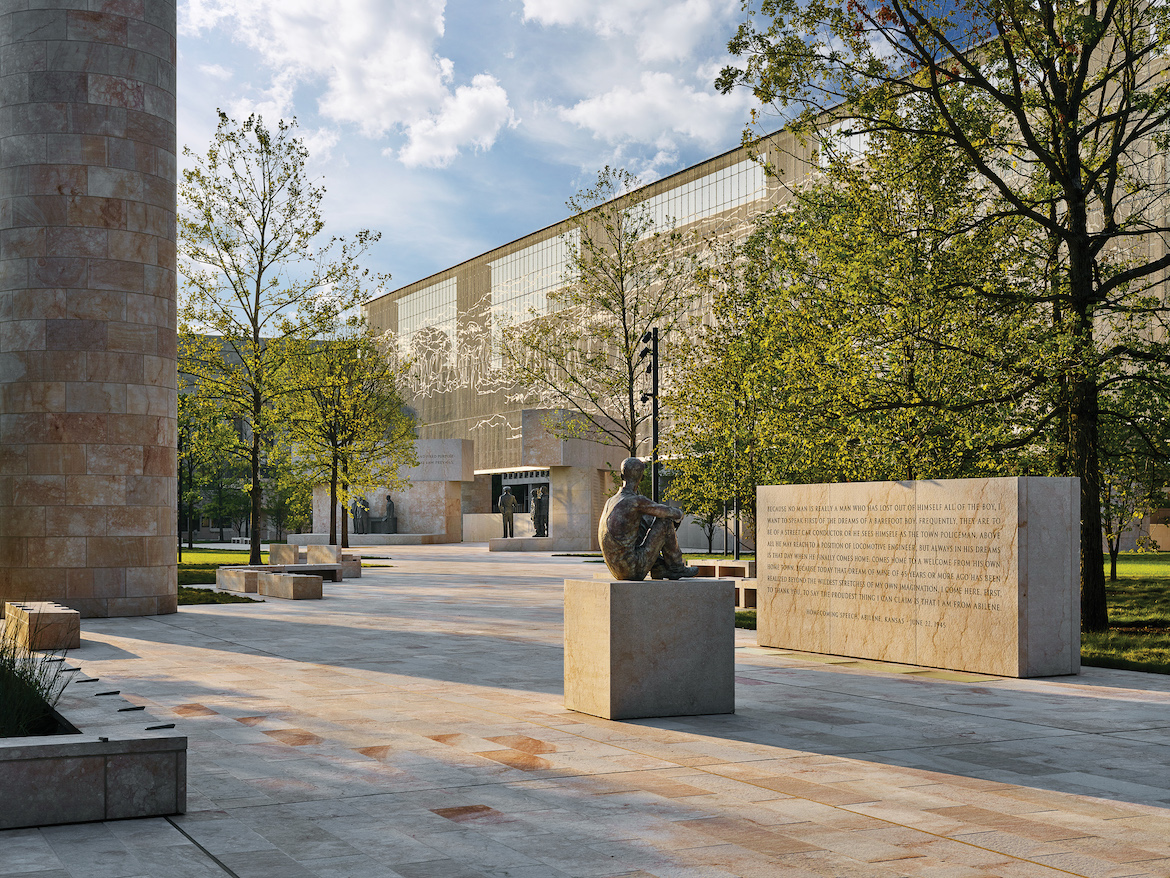
But the backstage drama isn’t evident in the finished memorial, a calm and gracious public space, with trees and greenery, and the U.S. Capitol clearly visible in the distance. A pale, rosy Ambar limestone from Spain dominates the plaza—for paving, seating, and crisp-edged freestanding stone walls carved with Eisenhower speeches. The focal points are a pair of stone podiums—stages for heroic bronze figures, 9 feet high, sculpted by a Russian-born Long Island-based artist, Sergey Eylanbekov. One grouping, of President Eisenhower with aides in the Oval Office, is rather dull. But the other staging, of Eisenhower speaking to soldiers of the 101st Airborne on the eve of D-Day, is gripping: the men turn their earnest, youthful faces to the general, even as he knows most are not likely to return from their mission—a moving moment to remember today, when the sacrifices of the military have been denigrated in high places.
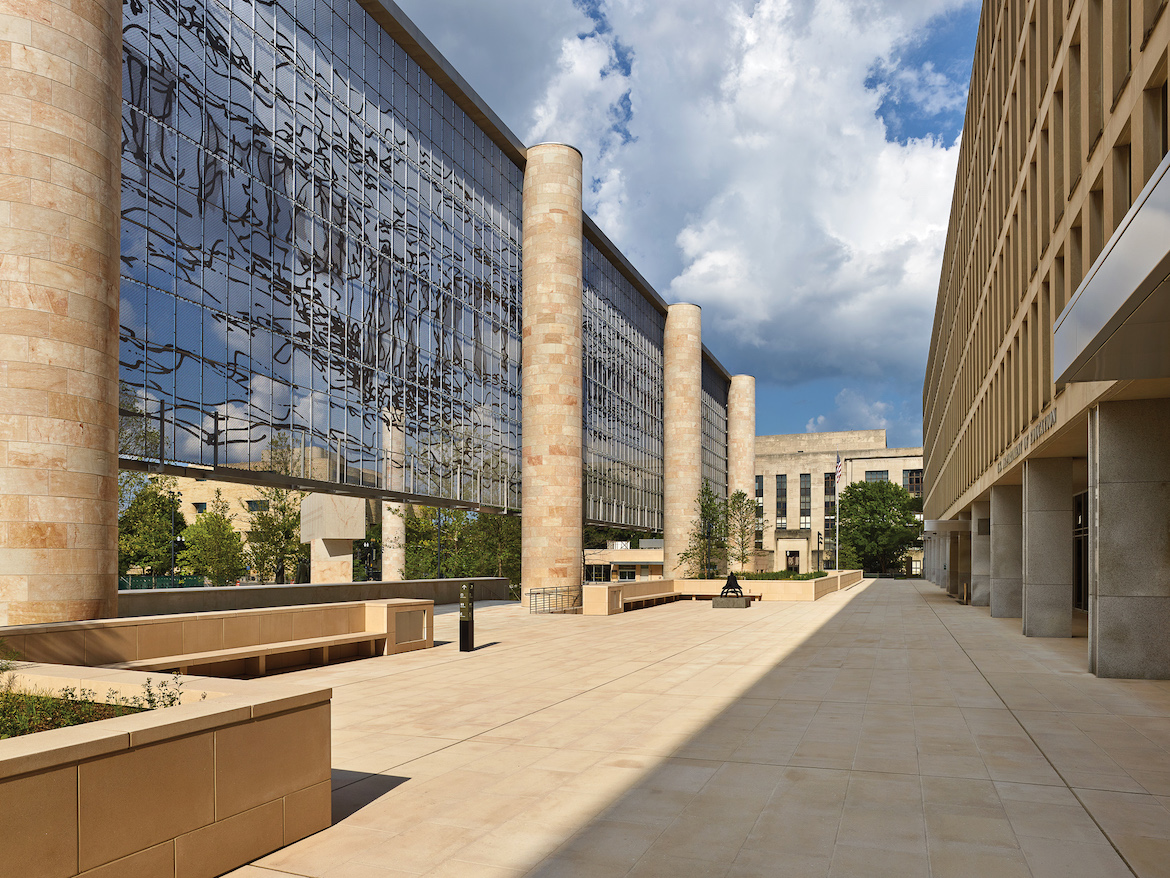
But the backdrop upstages the theater: the 447-foot-long metal tapestry, supported by 80-foot high Ambar-clad columns, is a tour de force. Gehry was flummoxed at first about how to evoke Pointe du Hoc—bare cliffs and sky. Finally, he made a sketch across a yellow legal pad—a spirited symphony of Gehry-esque wiggly lines that were translated into this expansive artwork of welded (not woven) stainless steel, by designer and fabricator Tomas Osinski, a frequent Gehry collaborator. During daytime hours, the screen is almost transparent, and the lines difficult to see, but at night (the beautiful lighting is by L’Observatoire International), it comes to luminous life.
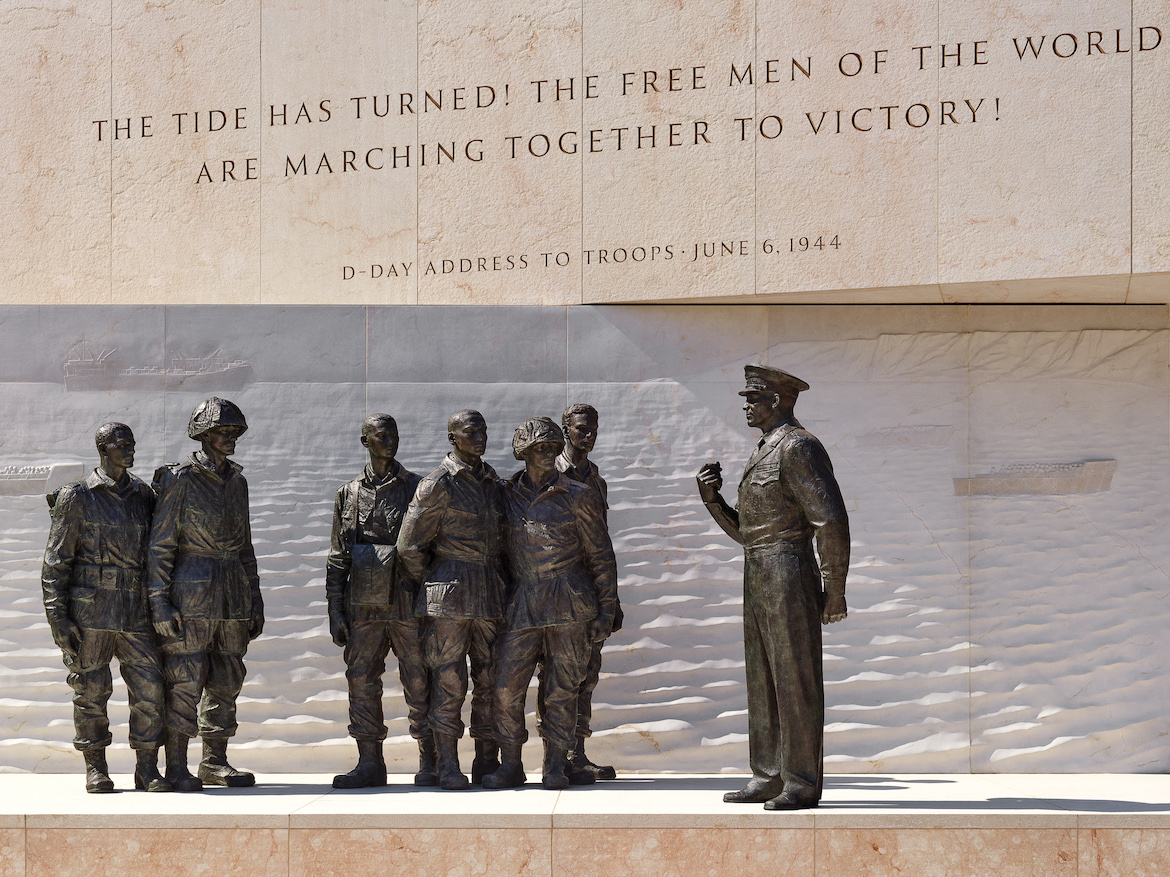
And the barefoot boy? He didn’t disappear altogether but sits now at the memorial’s edge—in life-size bronze rather than heroically scaled—his legs casually crossed (and shoes on), gazing at dual aspects of his future self, fighting a war and running the country. In these times, when youthful dreams seem harder than ever to hang on to, he is a poignant symbol, bringing the memorial’s monumentality down to earth.




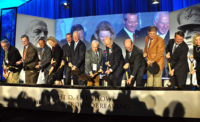
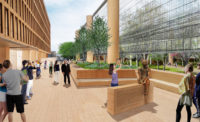
Post a comment to this article
Report Abusive Comment